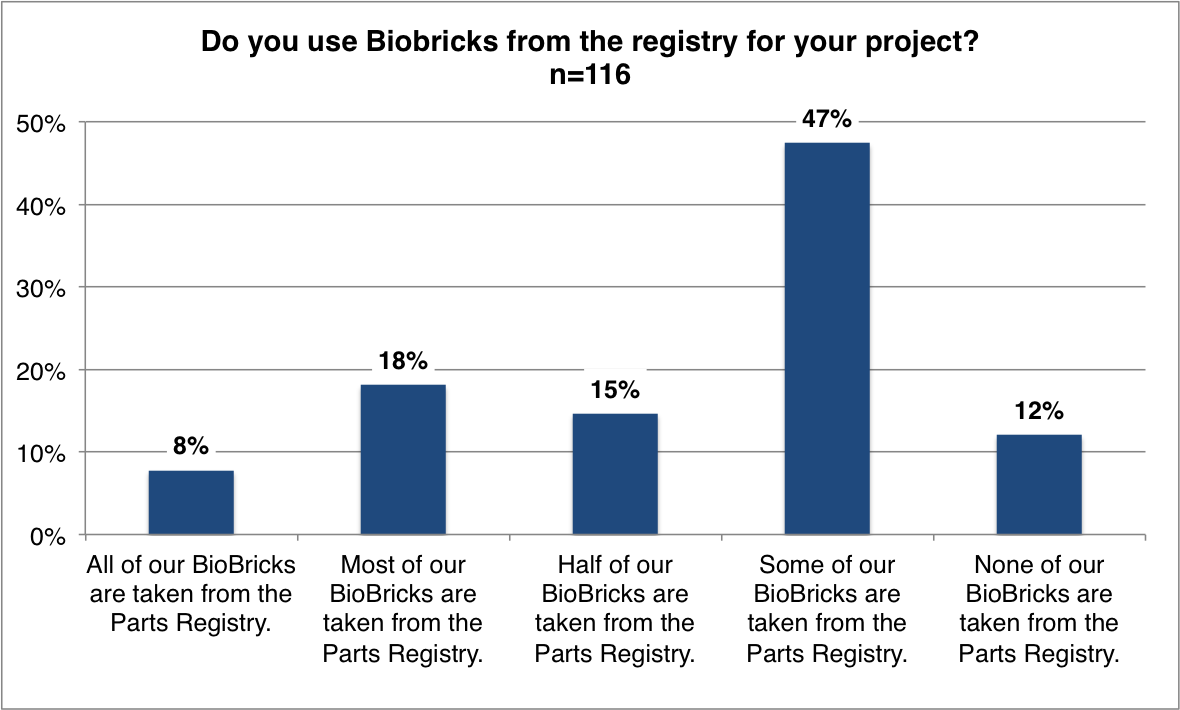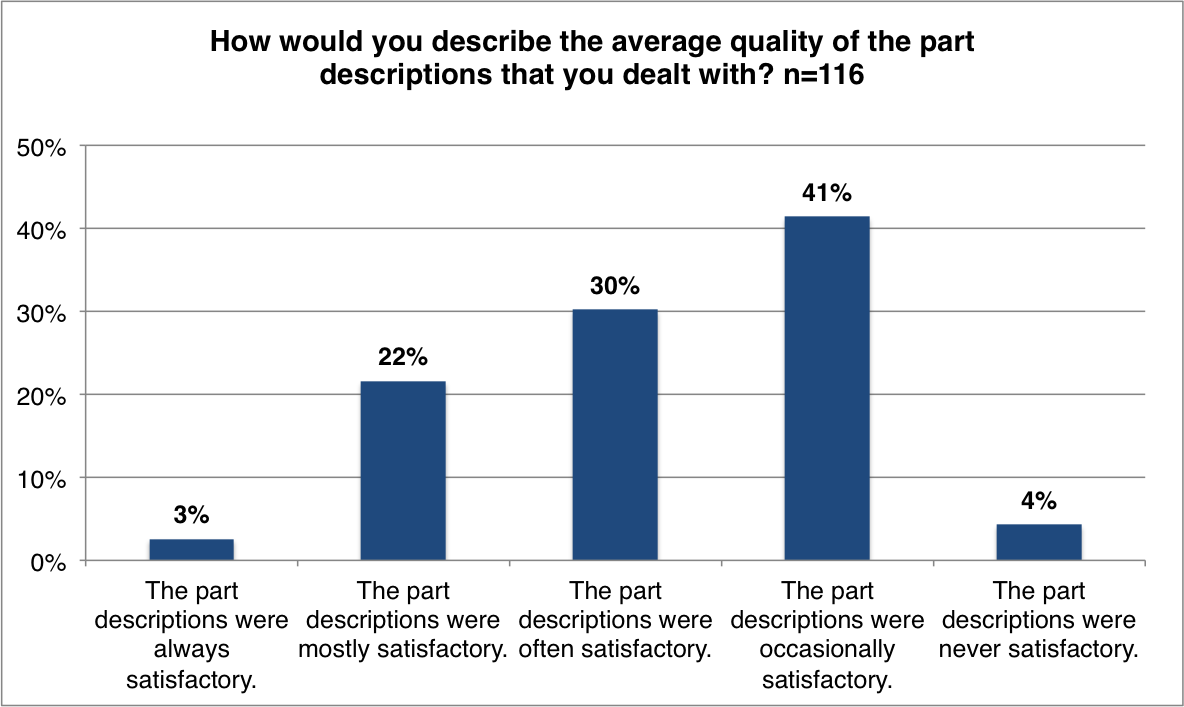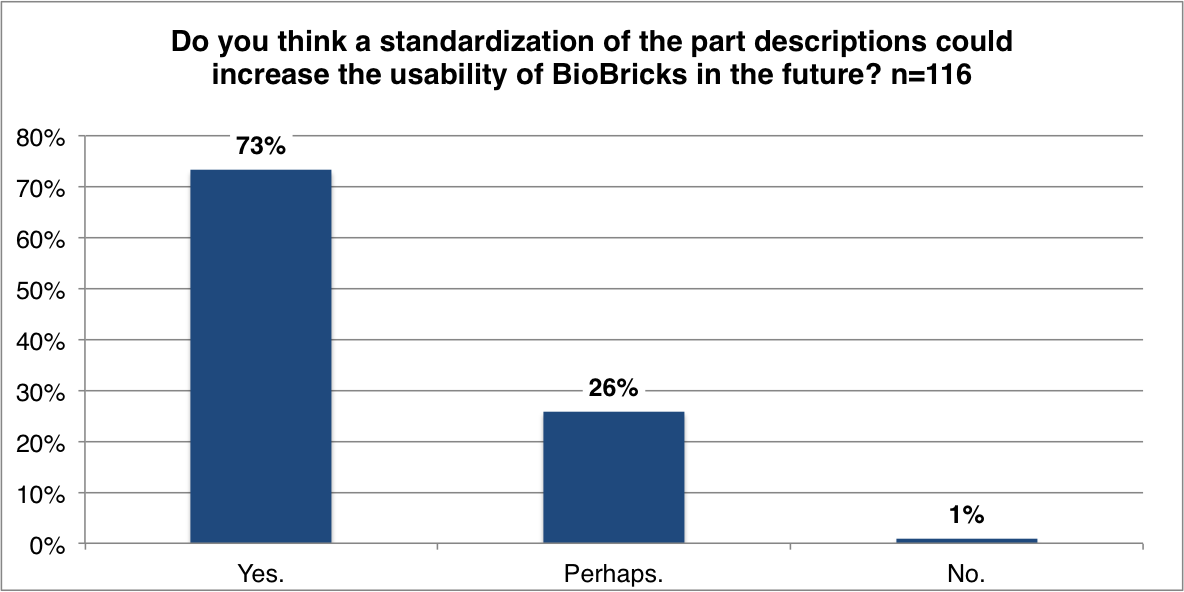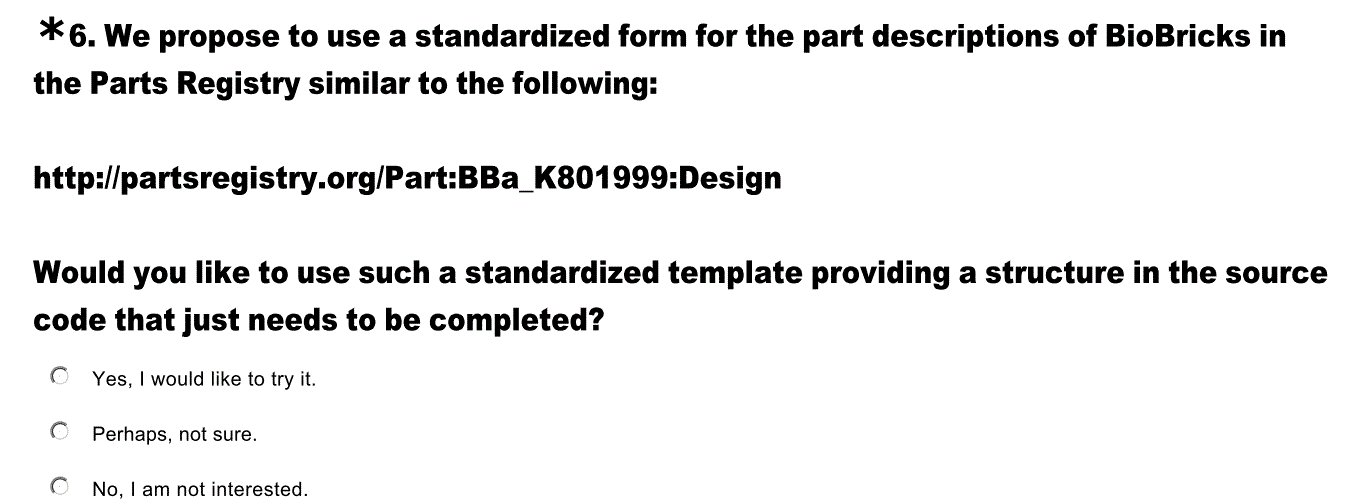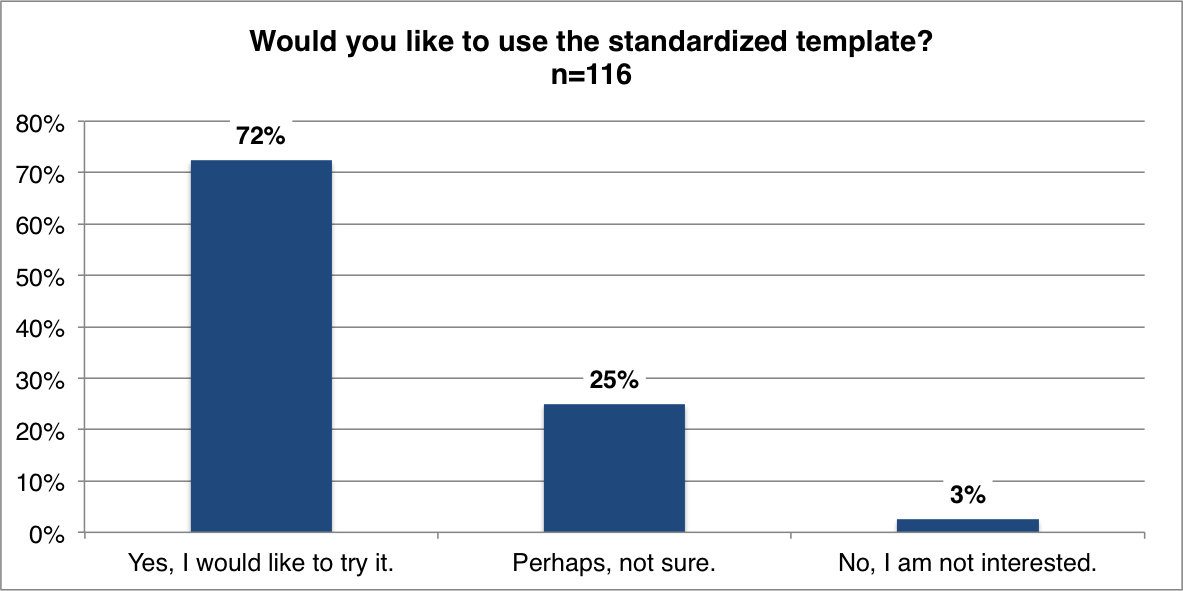Team:TU Munich/Results/RFC
From 2012.igem.org
(→The result: Our Request for Comments (RFC)) |
(→The result: Our Request for Comments (RFC)) |
||
| Line 169: | Line 169: | ||
<div class="bezel mfull"> | <div class="bezel mfull"> | ||
<br><br> | <br><br> | ||
| - | <center>'''This is our draft of a RFC for the standardization of BioBrick part descriptions | + | <center>'''This is our [https://2012.igem.org/File:TUM12_RFC82.pdf draft of a RFC for the standardization of BioBrick part descriptions]. We intend to discuss this issue at the Jamboree with the whole iGEM community. '''</center> |
[[file:TUM12_RFC82draft_page1.gif|900px|center]] | [[file:TUM12_RFC82draft_page1.gif|900px|center]] | ||
Revision as of 01:12, 27 September 2012



Contents
|
The Idea: Its all about standardization...
iGEM’s core idea is standardization: genetic elements are modified to easily combine them. Similar to electrical engineers biologists shall be enabled to construct large and more complex systems with fewer difficulties. A central element of this idea is the Parts Registry. Scientists have access to a huge variety of standardized genetic element, the BioBricks. This collection is constantly growing. Thereby it contributes to the successful diffusion and the acceptance of synthetic biology and it is the basis for and of great benefit to all researchers, supporters and participants of the iGEM competition.
Yet over time our team has come to the conclusion that iGEM’s core idea, standardization, is not fully implemented in the Parts Registry. Accessing the Registry frequently to plan a project using BioBricks, one very quickly realizes that the part descriptions are often unstructured. There are excellent examples of well-structured and organized descriptions. Unfortunately a defined standard is missing.
That fact can hamper the entire planning and research process. It is sometimes tiresome to gather all necessary information – if they exist at all. A well-defined description that contains all relevant information and that all participants have to stick to would improve the usability of the Parts Registry greatly. Users of the Registry could focus more intensely on the research itself. Therefore, the standard facilitates the working process and might boost the acceptability and usage of the Registry.
Since this standard can only be successful if all users of the Parts Registry consider it helpful, our team conducted an online survey and invited all of this year’s iGEM teams to participate. To the very end more than 55 teams – more than 25% of all teams – took part in our survey. Our initial assumptions were supported and our team decided to formulate a Request For Comment (RFC).
Please read on to find more detailed information on our survey, the unique Bavarian collaboration medal, the participants, the results and the RFC.
The Survey: Integrating community opinions...
The presented survey aimed to verify if there is a need for better BioBrick part descriptions (question 4 ), if it is belived that standardization of part descriptions could help to improove the situation (questions 5) and if the iGEM community is interested in testing a template for standardized part descriptions as presented by our team (question 6). The last two questions (question 7 and 8) were intended to collect usefull ideas how to improve our first blueprint of a standardized BioBrick part description template.
The survey can be found under: [http://www.surveymonkey.com/s/B8LZNXQ iGEM TU Munich's survey on standardization of BioBrick part descriptions]
Outline data of the survey:
- Start of the survey: 14th september 2012
- End of the survey: 20th september 2012
- Number of participants: 147 people participated in the survey; thereof 78,9% (116 participants) completed the survey
- Number of involved teams: 55
- Distribution channels: The survey was sent to all contact addresses of iGEM Teams from this year, posted on iGEM 2012's Community Page and posted on our as well on the iGEM Headquarters twitter account.
Question 1 and 2:

Answers
| Bielefeld-Germany | Colombia | UCSF | BioscienceDragons_AZ | Lyon-INSA |
| WLC-Milwaukee | Wisconsin-Madison | ZJU-China | Goettingen | Bonn |
| Missouri_Miners | British_Columbia | Potsdam_Bioware | UNAM_Genomics_Mexico | Frankfurt |
| Minnesota | Costa_Rica-TEC-UNA | NTNU_Trondheim | Buenos_Aires | SUSTC-Shenzhen-B |
| MIT | Johns_Hopkins-Wetware | ULB-Brussels | UNITN-Trento | Valencia |
| OUC-China | METU | Nevada | Arizona_State | Fatih-Medical |
| CINVESTAV-IPN-UNAM_MX | Slovenia | UANL_Mty-Mexico | TU_Darmstadt | UC_Chile |
| RHIT | Utah_State | Austin_Texas | Caltech | Duke |
| Johns_Hopkins-Software | SUSTC-Shenzhen-A | HKUST-Hong_Kong | Wageningen_UR | Berkeley |
| Bordeaux | Groningen | Queens_Canada | Tec-Monterrey_EKAM | Virginia |
| Tuebingen | Waterloo | Valencia_Biocampus | TU_Munich | Marburg_SYNMIKRO |
World map indicating the geographical origin of the participating teams:
Participants of TU München iGEM 2012 survey auf einer größeren Karte anzeigen
Question 3:
Answers
Question 4:
Answers
Question 5:
Answers
Question 6:
Answers
Question 7:
- Crosslinking to other databases
- Features typically annotated in Genbank and UniProt
- GO terms should be integrated
- Safety issues
- Relevant journal articles
- Fection for how the part can be improved in the future.
- Intelectual Property information should be included
- Use of tags
Question8:
- A possibility is needed to improve existing BioBrick part descriptions.
- Better search functions (multiply recommended)
Rewarding the participation in our survey
As a small present and to highlight their help in improving our attempt for standardization of BioBrick part descriptions we sent these badge to everyone in the iGEM community that participated in our survey and entered a contact email in Question 2. The sentence [http://www.oktoberfest.de/en/article/About+the+Oktoberfest/About+the+Oktoberfest/O%27zapft+is+-+The+Oktoberfest+has+started!/1453/ "O'zapft is!" yearly follows the traditional ritual of tapping the first barrel of Oktoberfest-beer] and is the official start of the Oktoberfest that takes place in Munich.
Additionally to this badge we ruffled a typical bavarian present among all participants of our survey.
Interpretation and conclusion from the survey
This interpretation summarizes the results of our survey and explains why we believe that a standardized part description will benefit the usability of the Parts Registry.
[http://www.surveymonkey.com/s/B8LZNXQ iGEM TU Munich's survey on standardization of BioBrick part descriptions] contained 8 questions. The first two were intended to track and get in contact with the participants of the survey. This information enabled us to identify how many different teams took part in the survey. A multitude of participating teams is a prerequisite for reliable results. The third question asked how many BioBricks are used in the current project of the participant’s iGEM team. The fourth question aimed at the perceived quality level of the part description encountered during the project. Question five targeted the participant’s opinion on whether a standardization of the part description could increase the usability of the parts registry. The sixth question introduced a draft of the new [http://partsregistry.org/Part:BBa_K801999:Design standardized BioBrick part description] and asked for the participant’s willingness to apply this standard. The last two questions (question 7 and 8) were intended to collect useful ideas how to improve our draft.
During the period from September 14th until September 20th, 2012, 147 people started the survey; thereof 78,9% (116 participants) completed the survey. The participants came from 55 different iGEM teams. That corresponds to more than one quarter of this year’s registered iGEM teams.
The answers to question three indicate that the vast majority of teams is using the parts registry. As the parts registry is the integral part of the iGEM competition this results is not surprising. However, about half of the participants state that less than half of their BioBricks are not taken from the parts registry. While designing new BioBrick and thereby extending the parts registry is one goal of iGEM, participants might avoid the registry intentionally as the answers to the subsequent question reveal.
Asked for the perceived quality level of the part descriptions (question four) in the registry only one quarter of the respondents replied that the descriptions were always or mostly satisfactory. The remaining 75 percent of the participants believed that part descriptions were not satisfactory to a decent degree. This result indicates that there is a potential for improvement concerning the part descriptions.
The answers to question five paint a similar picture. 73 percent of the respondents stated that a standardization of the part descriptions could improve the usability of the parts registry. Only one percent declared that a standardization would not improve the usability. To our understanding an improved usability of the parts registry accompanies a less difficult access to and facilitated widespread of the ideas of iGEM and synthetic biology in general.
The sixth question introduced a draft of the new [http://partsregistry.org/Part:BBa_K801999:Design standardized BioBrick part description]. The large majority of the participants (72%) indicated that they would be willing to employ the new standard. In addition 26% of the respondents stated that they are not sure about their willing to use the new standard and again only a very small percentage showed not interests in the new standard.
Results of Question 7 and 8 were used to improve the quality of the template and some valuable recommendations were integrated into the RFC.
The result: Our Request for Comments (RFC)
 "
"



